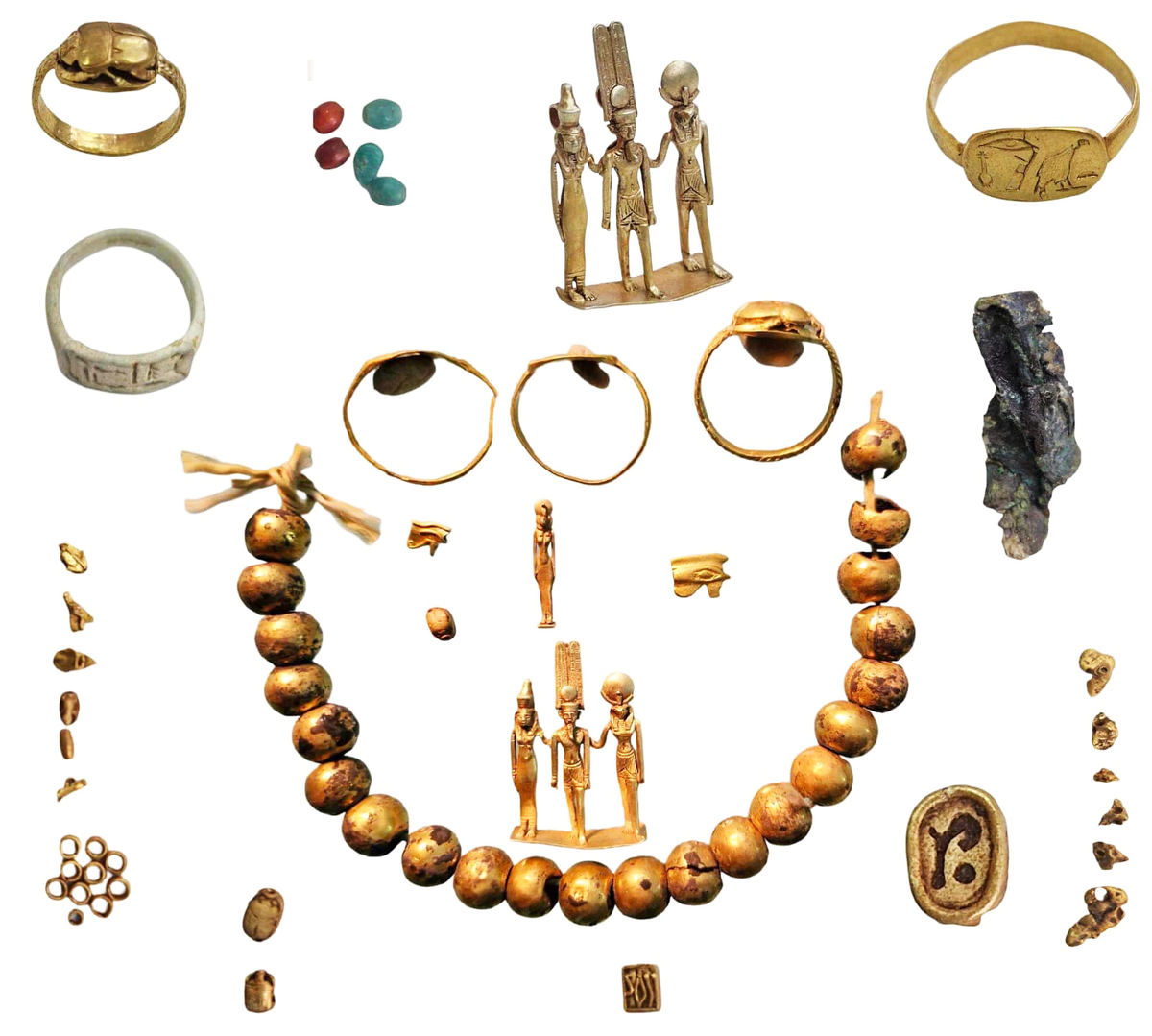07/03/2025
07/03/2025

LUXOR, Mar 7: Archaeologists have made a remarkable discovery at the ancient Karnak Temple complex near Luxor, Egypt: a 2,600-year-old pot containing a treasure trove of gold jewelry and statuettes depicting a family of ancient Egyptian gods. The findings, which include beads, amulets, and intricately crafted figurines, shed new light on the religious and cultural practices of the time.
The Karnak Temple complex, one of Egypt’s most significant ancient shrines, was constructed nearly 4,000 years ago and underwent continuous maintenance, renovation, and modification for almost a millennium. The recently unearthed artifacts were found in a small, broken pot, with all items preserved in excellent condition, according to Egypt’s Ministry of Tourism and Antiquities.
The collection includes gold and metal rings, as well as a triple statuette representing the chief god of Thebes, Amun; his wife and mother goddess, Mut; and their son, the moon god Khonsu. The statuettes, which depict the deities standing side by side, are believed to have been worn as neck amulets, serving both decorative and protective purposes.
In addition to the statuettes, researchers discovered a metal brooch, animal-shaped artifacts symbolizing the gods, and a variety of beads, some of which are gold-plated and date back to the early years of Egypt’s 26th Dynasty. Among the amulets were wadjet pieces—eye-shaped ornaments traditionally believed to safeguard their wearers.
The purpose of burying these artifacts in a pot remains unclear. Researchers speculate that they may have been part of a ritual offering or a donation to the temple treasury. This discovery has the potential to provide deeper insights into the Karnak Temple’s historical evolution and its significance during the first millennium BC.
The findings not only highlight the artistic and religious practices of ancient Egypt but also underscore the enduring legacy of the Karnak Temple as a center of spiritual and cultural importance. Further study of these artifacts could unlock new understanding of this iconic site and its role in ancient Egyptian society.


